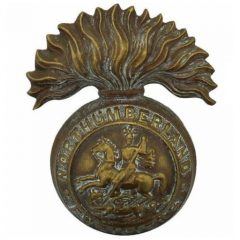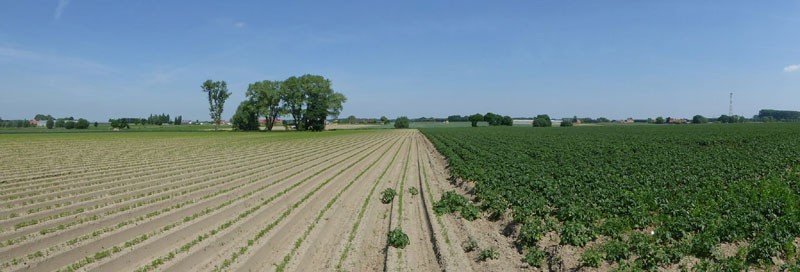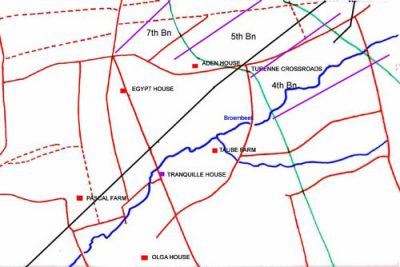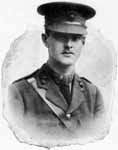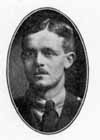13th November 1916
Orders were received stating that the 1st Divn would relieve the 50th Divn between the 17th and 19th of November.
At 6.30pm, Bde HQ issued an operation order, detailing the 5th Bn to attack on the right flank and the 7th Bn on the left. The 4th Bn were to be held in support with two Coys in Hexham Road and two in the Flers Line (with 5th Bn Green Howards attached). The 6th Bn were to hold the front line from the left of the 7th Bn to the Bde Boundary on the left and support the attack with Lewis Gun and rifle fire.
During the night of the 12th/13th Snag new support trench was dug and completed and Pioneer Alley was cleared as far as possible. To make it passable approximately two hundred duck-boards were laid cross wise in Snag Trench.
At 5.45am a Chinese barrage was laid down on Hook Sap and the Gird Line . With the artillery suddenly opening and the barrage steadily creeping forward, it gave the Germans the impression that an infantry assault was in progress.
'This of course, alarms the Bosche, who thinks we are coming over, and brings down all his artillery barrages too. These bombardments took place at 6am for several days’ [zotpressInText item="{ZZCPTDHK,76}"]
Enemy retaliation was very severe especially on Hexham Road , where an intense barrage was put up for an hour. Bn once again had several casualties from shell-fire.
The relief of the Bn by the 5th Bn commenced at 8pm, ‘C’ and ‘D’ Coys moved back to the Flers Line, but ‘A’ and ‘B’ Coys remained at Hexham Road. The relief was completed at 11.45pm.
the 5th and 7th Bns moved into position during the night ready to attack Hook Sap and the Gird Line at 6.45am.
‘The position was now as follows. The 1st Divn had pushed the enemy back to a line running along the top of a ridge running from the Butte of Warlencourt practically due east. This ridge prevented our seeing the enemy’s approaches and support position in Le Barque. On the other hand from Loupart Wood the whole of our approaches and support trenches were in full view of the enemy, as far back as High Wood. Across these two miles no one could move in daylight without being seen by the enemy, and there was practically no position to put our field guns forward of High Wood. The enemys’ front line consisted of two trenches - Gird Line and Gird Support - with a forward trench on top of the ridge, called on the left ‘ Butte Trench and on the right ‘Hook Sap’. Our front line Snag Trench and Maxwell Trench lay this side of the ridge and about two hundred yards away from the German forward trench’. [zotpressInText item="{Z5UXG9XQ}"]
‘The Butte of Warlencourt was a round chalk hill, rising about one hundred feet above ground level; and had been mined with deep dugouts and made into a formidable strong point. From the Butte, machine guns defended the approaches to Hook Sap, and the Hook Sap and the Gird line, machine guns defended the approaches to the Butte. The ground between and around the opposing trenches had been ploughed up with innumerable shells, some of huge calibre, and it was now a spongy morass, difficult to cross at a walk and impossible at a run. As events proved, unless both the Butte and the Gird Line could be taken at the same time, the one would render the other impossible to hold. This then was the problem that faced the 50th Divn, a problem that would have been difficult enough in the driest of weather, but rendered four times more so by the rain which fell in deluges on three days out of four during the whole of October and November’. [zotpressInText item="{Z5UXG9XQ}"]
‘A’ and ‘D’ Coy were in Hexham Road and ‘B’ and ‘C’ Coy in the Flers Line when the 5th and 7th Bns went ‘over the top’ to attack Hook Sap, alongside troops from the 2nd Australian Divn. On this occasion mist obscured the attacking troops from the troops in the Flers Line. The enemy defensive barrage was very prompt, opening up within two minutes of zero hour.
The 19th Australian Bn in conjunction with the 5th and 7th Bns took Gird Support. However, the trench was waterlogged, so they fell back to Gird Trench. The 7th Bn appeared to have taken Hook Sap, but they came under severe fire from Butte Trench and nothing more was heard from them. The day wore on and counterattacks were fought off. Two Coys of the 20th (New South Wales) Bn attempted a move against the Maze at 4.45pm but were stopped by machine gun fire. [zotpressInText item="{XGEW4MF2,156}"].
At 10am Capt R.W. Cranage was slightly wounded by piece of shrapnel in Flers Line.
On receipt of this news a sap was begun running out from Snag Trench to Hook Sap, the men digging hard. This sap was begun by 'D' Coy of the 4th Bn, who had been detailed for the work in operation orders. But at 11.30am they had to cease digging as the enemy machine gun fire was too heavy (50th Divn)
‘D’ Coy, under the orders of the 7th Bn, proceeded from Hexham Road to the head of Pioneer Alley to continue this Communication Trench towards Hook Sap. Machine Gun fire was so heavy that the party returned to Hexham Road.
At 2.35pm ‘A’ Coy was placed at the disposal of the 5th Bn. At 5pm 2nd Lt T. Bonner and fifty men reinforced the Gird Line on right (held by 5th and 7th Bns) with bombs and occupy left flank portion of line next to enemy. This party was engaged in heavy bomb fighting all next day.
3.30pm Trenches .
CO moves to Hexham Road to meet GOC 149th Bde
At 5pm ‘B’ and ‘C’ Coys move up to Hexham Road. ‘D’ Coy moves up to Snag trench front line.
At 6.30pm ‘B’ Coy moved to Snag trench to dig a Communication Trench from the head of Pioneer Alley to Hook Sap. ‘C’ Coy moved to Snag left of Pioneer Alley. Capt J.W. Robinson (OC ‘B’ Coy) was killed while leading a patrol reconnoitring Hook Sap.
At 11pm Lt Col B.D. Gibson and Maj N.I. Wright (5th Bn) went forward to reorganise the front line prior to an attack. For this task they had one Coy from the 4th and 7th Bns on the left and another Coy from the 4th Bn and the remains of 'A' Coy from the 7th Bn about thirty men.
The two coys in Starfish Trench went forward and occupied positions in Prue Trench vacated by the 7th Bn, who had gone further forward. Later in the day these Coys were recalled as the 7th Bn were returning there. The Bn expected to be relieved that night, but at 3pm orders were received that stating the the 4th and 7th Bn should relieve the Durhams in the front line. The 4th Bn relieved the 8th Bn DLI and 5th Bn Borders. The weather and the mud was appalling and a large number of bombs had to be carried forward, so the men were absolutely exhausted. The relief was not completed until about 9am on the morning of the 3rd.
